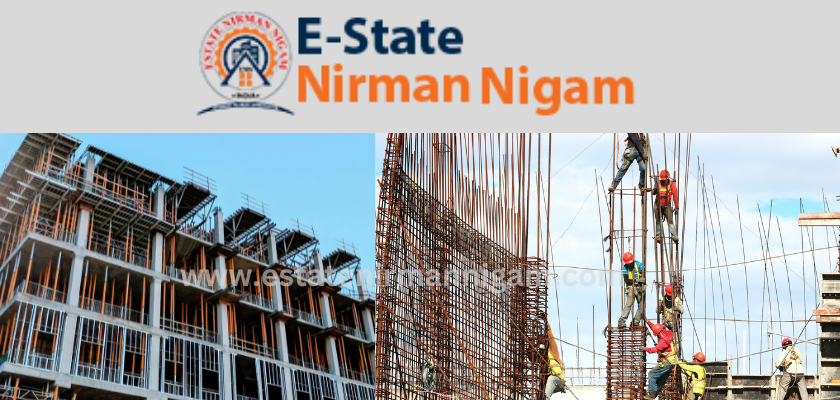
Introduction:
Definition and overview of construction as an industry and a practice.
Historical context and evolution of construction through the ages.
Types of Construction:http://estatenirmannigam.in
Residential construction: homes and apartments.
Commercial construction: offices, retail spaces, and mixed-use buildings.

Infrastructure construction: roads, bridges, and other public works.http://estatenirmannigam.in
Industrial construction: factories, power plants, and storage facilities.
The Construction Process:
Project planning and design: includes architectural and engineering considerations.
Permitting and legal compliance: zoning, safety, and environmental considerations.http://estatenirmannigam.in
Procurement and supply chain management: sourcing materials and managing suppliers.
Construction phases: from groundbreaking to finishing touches.
Materials and Techniques:
Overview of common construction materials: wood, steel, concrete, glass, etc.
Innovative and sustainable materials: cross-laminated timber (CLT), recycled materials, etc.
Modern construction techniques: prefabrication, modular construction, 3D printing.http://estatenirmannigam.in
Traditional techniques: bricklaying, stone masonry, and timber framing.
Safety and Regulations:
Workplace safety measures and protocols.
Regulatory frameworks and compliance standards.
Occupational health and safety concerns in construction.
Technology andhttp://estatenirmannigam.in Innovation in Construction:
Building Information Modeling (BIM): benefits and applications.
Drones, augmented reality, and other modern tech.
Automation and robotics in construction.
Sustainable construction practices and green building.
Challenges in the Construction Industry:http://estatenirmannigam.in
Labor shortages and skill gaps.
Supply chain disruptions and cost fluctuations.
Environmental impact and climate change concerns.
Legal and regulatory hurdles.http://estatenirmannigam.in
Future Trends in Construction:
Emerging technologies and their potential impact.
Smart buildings and cities.
The role of AI and data analytics in construction.
Circular construction and reusing materials.
Case Studies:
Examples of innovative projects around the world.
Howhttp://estatenirmannigam.in different regions approach construction differently.
Conclusion:
Summary of key points from the article.

Future outlook and opportunities in construction.
Closing thoughts on the importance of construction in society.
Here’s how you might expand on each of these sections:
Introductionhttp://estatenirmannigam.in: Discuss the evolution of construction methods and how the industry has grown to meet the demands of modern society. Include notable historical milestones in construction and how they shaped the industry today.
Types of Construction: Provide examples and distinctions between the various construction types. Include insights into the challenges and specific requirements of each type.

The Construction Process: Discuss the different stages of a construction project, including planning, design, and execution. Explain the roles of key stakeholders such as architects, engineers, and contractors.
Materials and Techniques: Offer a deep dive into traditional and modern construction materials and techniques. Highlight the pros and cons of each and discuss emerging trends.http://estatenirmannigam.in
Safety and Regulations: Explain the importance of safety in construction and the role of regulations in protecting workers and the environment.
Technology and Innovation in Construction: Discuss how technology is transforming construction, from planning and design to execution and maintenance.
Challenges in the Construction Industry: Provide a thorough analysis of the current challenges faced by the construction industry and potential solutions.
Future Trends in Construction: Explore where construction is heading in terms of technology, materials, and practices.
Case Studies: Provide real-world

examples of construction projects that highlight innovation and best practices.
Conclusion: Wrap up your article by summarizing key points and offering a perspective on the future of construction.http://estatenirmannigam.in
These sections, when expanded upon with research, examples, and analysis, will provide a comprehensive look at the construction industry. Make sure to use reliable sources and up-to-date information for the most accurate and insightful articlehttp://estatenirmannigam.in